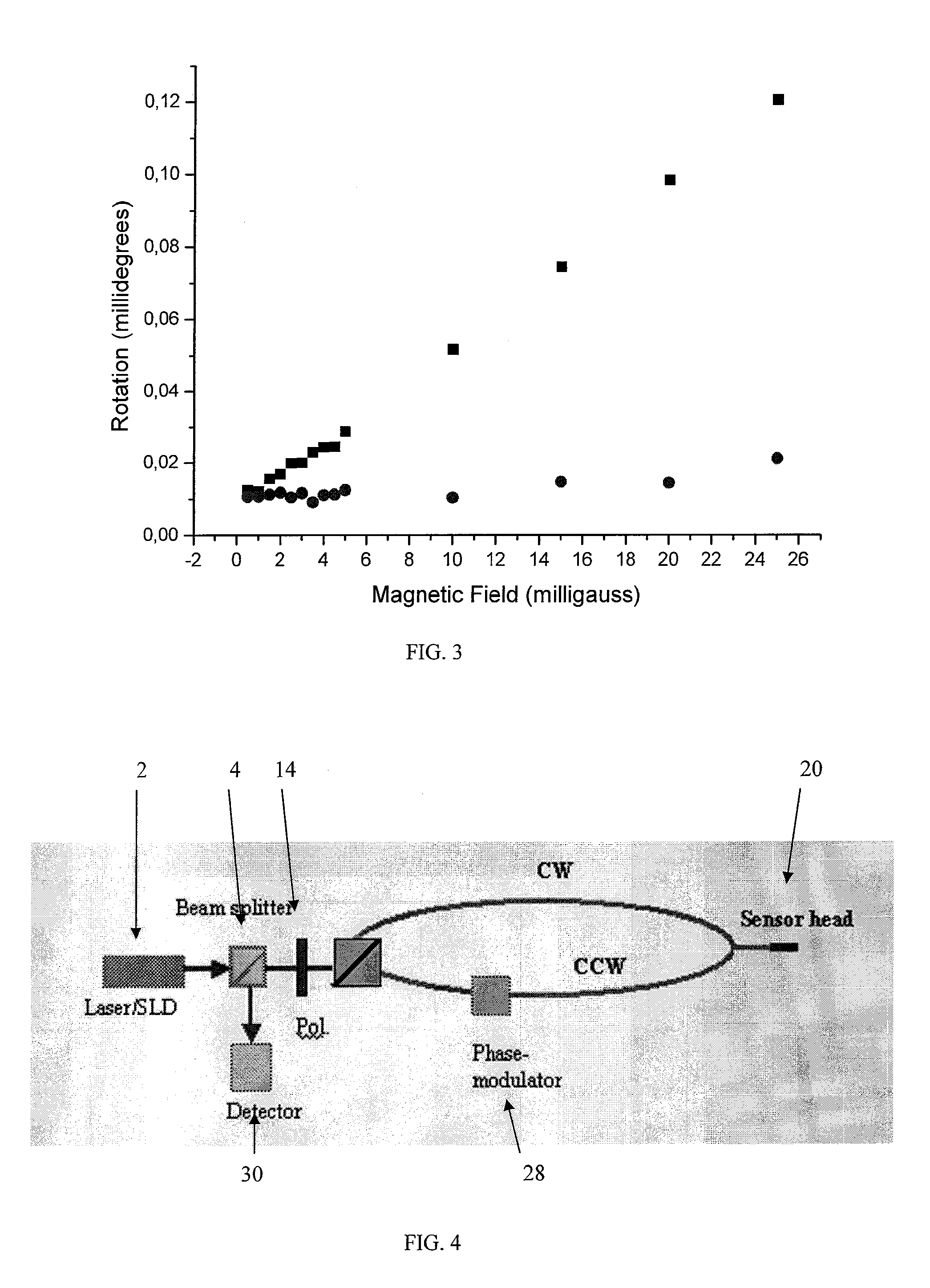Ultrasensitive magnetic sensor based on giant faraday rotation
a magnetic sensor and giant faraday technology, applied in the direction of magnetic measurement, instruments, measurement devices, etc., can solve the problems of limited detection bandwidth of the lock-in scheme, prohibiting the use of squid devices in current medical practice, and only working at cryogenic temperatures, etc., to achieve high verdet constant
- Summary
- Abstract
- Description
- Claims
- Application Information
AI Technical Summary
Benefits of technology
Problems solved by technology
Method used
Image
Examples
example 1
Conjugate Polymers
[0046]In the first example, the sensing material used is a conjugated polymer, e.g., is a conjugated polymer which can be loaded with superparamagentic nanoparticles. The amount of nanoparticles in the polymer can range from 0.1 to 50 wt %, e.g. 1-10 wt %.
[0047]Examples of such polymers are shown below:
with R as any possible chemical group. However, other conjugated polymers such as poly(acetylene)s, poly(pyrrole)s, poly(aniline)s, poly(fluorene)s, poly(thiophene)s, polytetrathiafulvalenes, polynaphthalenes, poly(p-phenylene sulphide), poly(para-phenylene vinylene)s can be used.
[0048]Some experimental values of the Verdet constant of a polyalkoxythiophene are given in the Table below. The Verdet constant was measured at three different wavelengths, i.e., 633 nm, 830 nm and 1550 nm.
633 nm830 nm1550 nmpolythiophene−2500000° / Tm−2500000° / Tm−1000000° / Tm
[0049]Examples of the synthesis of some conjugated polymers for use with the present invention are shown in the schemes...
example 2
Superparamagnetic Nanoparticles
[0068]In another example, the sensing element is a polymer doped with superoparamagnetic nanoparticles. The polymer may be a conjugate polymer as disclosed above. However the present invention is not limited thereto but includes the use of transparent polymers loaded with superparamagentic nanoparticles. The polymer forming then matrix can be any suitable transparent polymer such as PMMA, polyethylene, polypropylene, polycarbonate, ABS, PVC, PVA, polyimide, polystyrene, etc., or a conjugate polymer as described with reference to this invention. The amount of nanoparticles in the polymer can range from 0.1 to 50 wt %, e.g., 1-10 wt % or 1 to 20 wt %.
[0069]The material can be formed into a film. The film can be made by any suitable method, e.g., compression molding, extrusion, spin coating, doctor blading, powder coating, etc. The material in film form will transmit light. In order to make the film translucent or transparent it is preferable if the parti...
PUM
 Login to View More
Login to View More Abstract
Description
Claims
Application Information
 Login to View More
Login to View More - R&D
- Intellectual Property
- Life Sciences
- Materials
- Tech Scout
- Unparalleled Data Quality
- Higher Quality Content
- 60% Fewer Hallucinations
Browse by: Latest US Patents, China's latest patents, Technical Efficacy Thesaurus, Application Domain, Technology Topic, Popular Technical Reports.
© 2025 PatSnap. All rights reserved.Legal|Privacy policy|Modern Slavery Act Transparency Statement|Sitemap|About US| Contact US: help@patsnap.com



